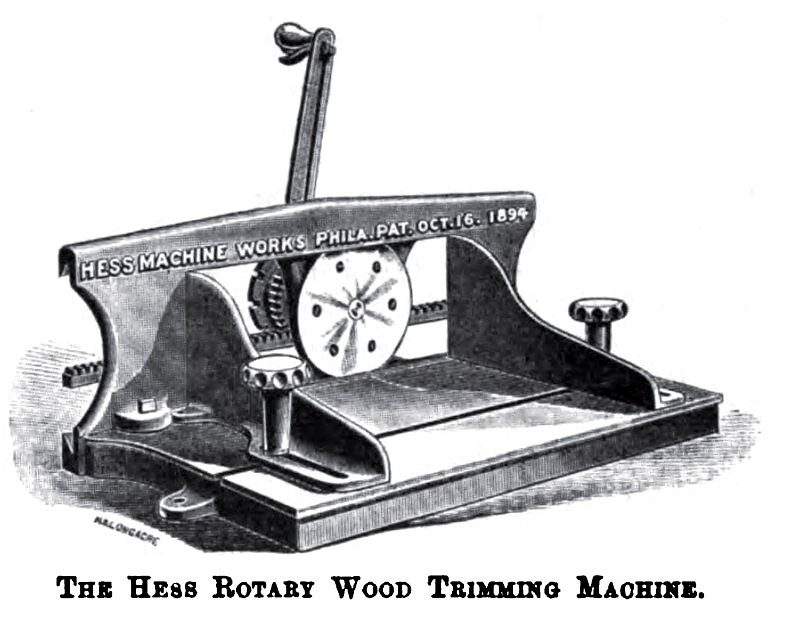|
Title: |
1895 Article-Hess Machine Works, Rotary Wood Trimming Machine |
|
Source: |
Chicago Journal of Commerce, 07 Feb 1895, pg. 15 |
|
Insert Date: |
11/4/2012 11:40:01 AM |
The Hess Machine Works of Twenty-fifth and Callowhill streets, Philadelphia, make the rotary wood-trimming machine here illustrated. In this machine the cutter or trimmer is circular in shape, and has both rotary and traversing motions imparted to it. The bed or base has a longitudinal groove in it to receive the heads of bolts serving to attach the guides shown. The heads of the bolts and the groove are dovetailed in shape to prevent a vertical movement of the former.
The guides may be set at any angle, the extended slot seen on the side allowing the bolt to grip it at any point along the groove covered in its radial movement. Attached to the base is a standard to which is connected a horizontally arranged rack with which engages a pinion whose shaft passes through a traveler which is guided by recesses in the top and bottom of the standard. The face of the traveler is recessed to admit a head having a circular blade or knife attached. The head, with its knife, is screwed to the front end of the shaft of the pinion. At the rear end of the arbor is secured a toothed wheel, with which engages a pawl hung on the crank arm, the crank arm being freely mounted on the arbor. Immediately below the handle of the crank arm is a clutch arm, which engages the pawl with the toothed wheel, so that when clasped in connection with the handle of the crank arm, and the crank arm is turned right or left, the toothed wheel rotates and the pinion rides over the rack, carrying the traveler with it, causing the cutter to rotate and traverse the bed plate.
In operation, the stock to be cut is placed by means of the guides in position for cutting, and the crank arm turned in the direction of the required cut. After the cutter has passed through the stock the pawl is let go and the arm turned back for another cut. Thus the cutter may be made to traverse the entire length of the bed in either direction and operated right or left, as desired. Or it may be made to traverse to the extent required by the width of the stock to be cut and no more. In advancing, the knife draws 2 inches to a surface cut of 1 inch. In continued cutting there is a cutting surface of 18 inches to be utilized; therefore in cutting, say, 1-inch stock continually there are nine surfaces available before the knife need be removed for sharpening.
It will be observed that any portion of the cutting edge of the knife may be utilized by merely rotating the knife to the point desired and again engaging with the ratchet. The knife holds the work as in a vise while the cut is being made, and for the reason the guides can be dispensed with in most cases. The drawing cut of the knife prevents the breaking of the edge of the stock during cutting and tends to keep the edge of the knife in good condition.
Patent # 527,604 |
|
 1895 Hess Machine Works, Rotary Wood Trimming Machine
1895 Hess Machine Works, Rotary Wood Trimming Machine
|
|